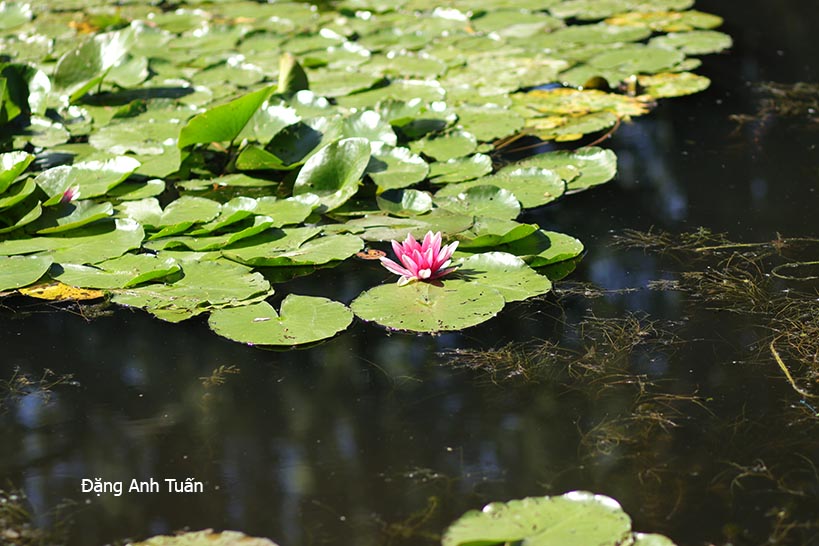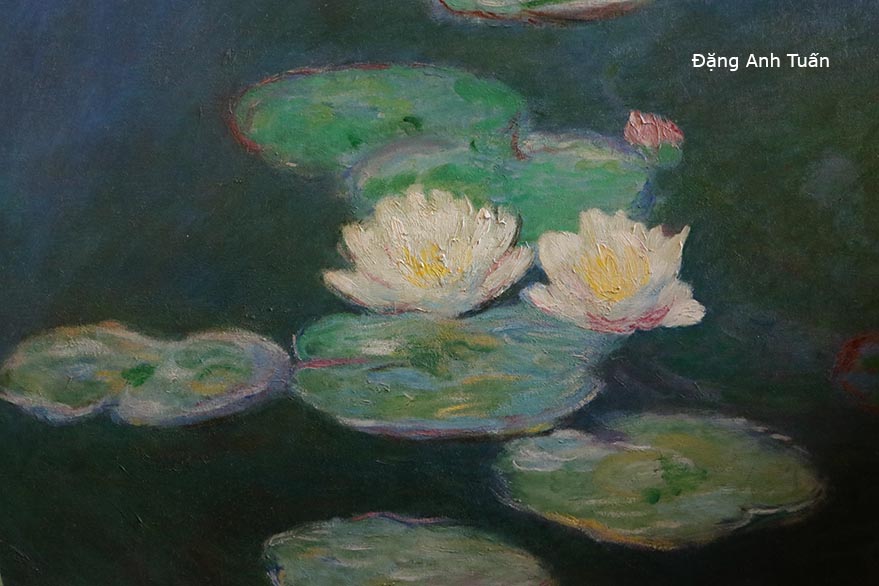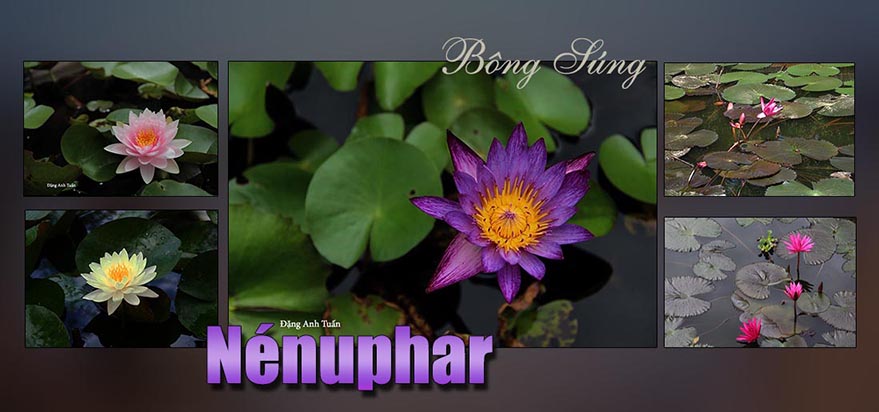 Dans le jardin de Claude Monet (Givenchy)
Dans le jardin de Claude Monet (Givenchy)
Được xem là biểu tương sự tinh khiết và yên tĩnh, cây bông súng thường mọc hoang dã trong bùn. Ở nam bộ Vietnam, người ta thường ăn mắm kho với bông súng hay dùng nó để làm món gỏi tuyệt vời. Để bảo vệ một cách hữu hiệu các bộ phận tựa như nhụy và nhị, cây bông súng có được một cơ chế hóa lý rất tinh vi khi trời về đêm lạnh rét hay có độ ẩm cao. Nhờ có nước lan tràn vào các không bào và có sự biến đổi của ánh sáng và nhiệt độ khiến có sự thay đổi ở nơi có tập trung nhiều ion canxi của các tế bào và dẩn đến việc tạo ra áp suất trên các mặt trong và ngoài của các tràng hoa. Vì vậy các cánh hoa hay bị méo mó nhưng không vì thế mà bị hư hỏng. Chiều tối lại, cây bông súng dựng đứng lên các cánh hoa để che chở các bộ phận sinh sản bằng cách làm phòng ra các tế bào của nó. (sự trương nước) Còn sáng lại nó buông lơi xuống các cánh hoa và làm co lại các tế bào (sự co lại gọi là plasmolyse) bằng cách làm bốc hơi nước và giảm đi áp xuất trên các vách tế bào. Tùy thuộc dáng vóc mà hoa súng có nhiều cánh hoa hay không để nó có thể dễ dàng đóng khép và bảo trợ các bộ phận sinh sản. Đối với các nhà nghiên cứu khoa học, đây không những là chuyện thăng bằng mà còn là một phát minh tuyệt vời được tìm thấy ở các thực vật trước khi con người khám phá ra được các máy bơm nước và cái kích.
Etant le symbole de paix et de pureté, le nénuphar est habitué à pousser sauvagement dans la boue. Au Vietnam, on s’en sert dans le Sud soit pour accompagner la soupe aux poissons (mắm kho) soit pour faire une salade délicieuse. Le nénuphar possède un mécanisme physique et chimique très ingénieux permettant de protéger ses organes reproductifs (étamines, pistils) contre le froid et l’humidité nocturne. Grâce à la pénétration de l’eau dans les vacuoles et aux variations de la lumière et de la température modifiant ainsi la concentration en ions calcium des cellules, cela provoque la pression sur les faces interne et externe de ses corolles et facilite la déformation de ses pétales sans que ces derniers soient abîmés. Le soir, le nénuphar redresse ses pétales pour protéger ses appareils reproducteurs par le gonflement de ses cellules (turgescence) tandis que le matin il les fait retomber par le dégonflement de ces mêmes cellules (plasmolyse) en diminuant la pression sur leurs parois cellulaires et en perdant de l’eau par évaporation. En fonction de la taille, la fleur du nénuphar doit avoir un certain nombre de pétales afin de mieux se refermer et protéger ses organes reproductifs. Pour les chercheurs, c’est non seulement une affaire d’équilibre mais aussi une invention géniale chez les plantes avant la découverte des pompes hydrauliques et des vérins par les hommes.
Galerie des photos
Lis d’eau
Tableau nénuphar de Monet
Being the symbol of peace and purity, the water lily is accustomed to grown savagely in the mud. In Vietnam, it is used either by accompagnying the fish soup in the South region or by making a delicious salad. The water lily has a chemical and physical mechanism very ingeniuos allowing to protect its reproductive organs (stamen, pistil) against the cold and night humidity. Thanks the water penetration in vacuoles and variations in light and temperature, thereby altering calcium ion concentration in cells, it causes the pressure on the internal and external faces of its corollas and facilitates the deformation of its petals without the latter being damaged. At night, the water lily adjustes its petals for protecting its reproductive system by the swelling of its cells (turgor) while in the morning, its petals fall down by the deflation of these same cells thanks to the pressure reduction applied on their cell walls (plasmolysis) and the loss of water by evaporation. Depending on size, the flower of water lily must have a certain number of petals for being closed again and protecting its reproductive organs. For scientists, it is not only the balancing act but also an ingenious invention in plants before the discovery of hydraulic pumps and cylinders by men.


